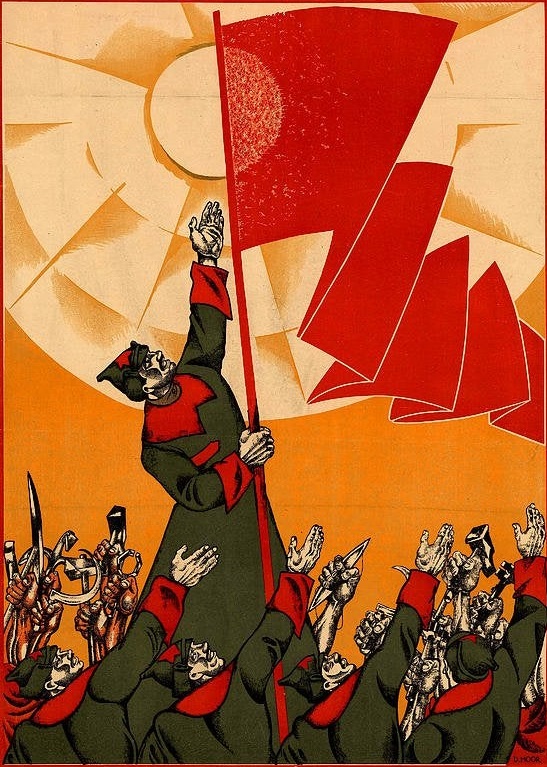CN lawmakers pass bill that questions US's claims over Hawaii
Imagine if that was the headline...
The problem is that any claim by the United States to any territory is infinitely more absurd than China's claim to Tibet. I used Hawaii as an example, but it could be Puerto Rico, Alaska, Texas, California, New Mexico, all the way to the entire country that has been despoiled of its indigenous population.
Imagine if that was the headline…
Well that headline would be pretty damn accurate!
all the way to the entire country
China is no different. In fact there are NO countries in the world immune to the "you displaced a previous civilization" argument. They've all done it.
The only people China has displaced from Tibet is an entire theocratic class of pedophile priests who kept the people in literal serfdom
Edit: Actually I just reread this and it looks like they kicked out the landlords too

Tibet was de facto independent for a while, but it re-joined China voluntarily circa 1950. About 10 years later, with some help from western agitation and assets, the theocratic ruling class felt too threatened by development empowering their serf population and sought to secede in order to maintain their fiefdom. Mao sent in the PLA and crushed the secessionist revolt.
You really can't "no u" this one because of Imperial China, the PRC's claim to Tibet is completely valid. You'd probably have more luck trying with Xinjiang, though evidently that is viewed as slightly played-out now.
In fact there are NO countries in the world immune to the “you displaced a previous civilization” argument. They’ve all done it.
Yet, some did it much more recently than others, and many of the peoples they stole from still exist and are still being exploited (not China-Tibet case). At the very least, one would expect countries not to go around questioning the legitimacy of other countries' territories when their own have no legitimacy at all.
Nation states are memetic egregor, they only exist as long as we believe in them.
Like Santa Claus
Creating disbelief can be as functionallity effective at state dissolution as cracking open the skulls of those who believe in it
Every aspect of human society exists because we, as a society, believe in them, including society itself. The very tools we use to measure the world beyond man are human fabrications. However, the maintenance of a social model does not necessarily depend on all its members believing in or agreeing with it, only on continuing to work for it. Cultural, social, and physical constraints exist and are very real. For example, it was common a few years ago in the "Free Palestine" online community to say that Israel is not real, but this statement has never stopped any of Israel's oppressive actions from happening. Understanding that all systems are fabricated is a fundamental step towards the possibility of replacing them with better systems, but for this to happen, realization needs to evolve into organized action: the only tool capable of changing the world. And yes, it is only possible to replace one system with another, and it is not possible to live without a system, because what makes us human is precisely this characteristic: we created the social system to overcome the evolutionary system.
And to rationalize the world we live in, we create rules to legitimize our other creations. We can use any factors to generate these rules, but to avoid chaos, we agree, in materialism, to use historical, cultural, and economic factors to justify the control of a territory by a nation state. Considering these factors, in a comparative sense, the control of the United States over any of its constituent territories is much more illegitimate than the control of Tibet by China. Does this mean that we should dismember the United States and return its territories to their original owners? No, it means that someone who believes that China should grant independence to Tibet should also advocate for the dismemberment of the United States. Since in this case the decision came from the United States government, which, I imagine, has no intention whatsoever of dismembering the United States, we can conclude that the only motivation for this is to antagonize China, and it does not stem from a concern for the right of peoples to self-determination.
This a fantastic nuanced answer. It does start to go off the rails near the part where you assert china territorial claim over USA's. And when you say collective action is the only way, which, if I am not mistaken is a core authleft belief.
I think all states and cancerous egregors on the human psyche with varying levels of malignancy.
Even as they make my living conditions possible, I despise them. Especially the part where you correctly identify that not all humans under the egregor's control are required to believe abd support it for it to continue existing and imposing its will on humanity.
Yes, as long as enough believers enacts its decrees it will endure.
I think what I meant earlier, is that ideas that can dispell this state if belief, can be as effective at cause the egregor's remission as bombs are at kinetically dismantling it. Maybe even more.
I do take special exception with your notion that these egregors come into being out of conscious and renewed informed consent. Rather I believe they arise out of historical and material contingency and persist through friction, self-reinforcement and passive failure of imagination for an alternative by the population.
Pardon the shorthand, but my interlocutor understood what I meant just fine. After all, I'm typing all of this with the right side of my thumb sliding on some glass, I think I deserve some slack !
And when you say collective action is the only way, which, if I am not mistaken is a core authleft belief.
It's a core Marxist observation, based in history. Every system that has ever fallen has fallen because of the organized action of a class or a set of classes, not necessarily in a party, since the very notion of a party is extremely recent, but organization in some form. It's a process that is always violent, usually doesn't happen all at once and may not be definitive, but that's how things have happened so far. There's no evidence that it will happen the way you think it will, but honestly, good luck with that. It would be great if we could move to a fairer system without all the burden of having to organize and having to respond to reactionary violence in the same level.
I do take special exception with your notion that these egregors come into being out of conscious and renewed informed consent.
I don't know exactly what in my answer led you to the conclusion that I think so, but that's not the case. In my opinion, these "egregors", which I call ideologies, arise according to the need that material conditions require. As material conditions change, mainly because of the sophistication of the means of production, new ideologies emerge from the new socioeconomic conditions produced by this change.
Since taking office in 2021, Biden has yet to meet the Dalai Lama. As a candidate in 2020, Biden criticised Donald Trump for being the only US president in three decades who had neither met nor spoken to the Tibetan spiritual leader.

Realistically he probably didn't mean to slight them but just forgot.
I guess the US really likes protecting the rights of pedophiles...
Dalai Lama apologises after kissing boy and asking him to ‘suck my tongue’
Reporter: [REDACTED]
Reason: Dumbass alert🤡
Some reports make me want to break my own rule of not divulging reporters’ names.
Tibetan monks literally had child sex slaves. Those dudes have a better PR department than the Catholic church
Those dudes have a better PR department than the Catholic church
Catholic church isn't backed by the entire western propaganda machine, Dalai Lama is.
Definitely better now than the theocracy it used to be under, but it can get a lot better.
The way to get better is not to return it to a theocratic serfdom system.
The west will never get over the fact that Tibet is already free
I question the US's claims over a certain region (the whole of it)
Show
CW: a litany of absurd horrors
Religions have had a close relationship not only with violence but with economic exploitation. Indeed, it is often the economic exploitation that necessitates the violence. Such was the case with the Tibetan theocracy. Until 1959, when the Dalai Lama last presided over Tibet, most of the arable land was still organized into manorial estates worked by serfs. These estates were owned by two social groups: the rich secular landlords and the rich theocratic lamas. Even a writer sympathetic to the old order allows that “a great deal of real estate belonged to the monasteries, and most of them amassed great riches.” Much of the wealth was accumulated “through active participation in trade, commerce, and money lending.” [11]
Drepung monastery was one of the biggest landowners in the world, with its 185 manors, 25,000 serfs, 300 great pastures, and 16,000 herdsmen. The wealth of the monasteries rested in the hands of small numbers of high-ranking lamas. Most ordinary monks lived modestly and had no direct access to great wealth. The Dalai Lama himself “lived richly in the 1000-room, 14-story Potala Palace.” [12]
Secular leaders also did well. A notable example was the commander-in-chief of the Tibetan army, a member of the Dalai Lama’s lay Cabinet, who owned 4,000 square kilometers of land and 3,500 serfs. [13] Old Tibet has been misrepresented by some Western admirers as “a nation that required no police force because its people voluntarily observed the laws of karma.” [14] In fact it had a professional army, albeit a small one, that served mainly as a gendarmerie for the landlords to keep order, protect their property, and hunt down runaway serfs.
Young Tibetan boys were regularly taken from their peasant families and brought into the monasteries to be trained as monks. Once there, they were bonded for life. Tashì-Tsering, a monk, reports that it was common for peasant children to be sexually mistreated in the monasteries. He himself was a victim of repeated rape, beginning at age nine. [15] The monastic estates also conscripted children for lifelong servitude as domestics, dance performers, and soldiers.
In old Tibet there were small numbers of farmers who subsisted as a kind of free peasantry, and perhaps an additional 10,000 people who composed the “middle-class” families of merchants, shopkeepers, and small traders. Thousands of others were beggars. There also were slaves, usually domestic servants, who owned nothing. Their offspring were born into slavery. [16] The majority of the rural population were serfs. Treated little better than slaves, the serfs went without schooling or medical care. They were under a lifetime bond to work the lord’s land — or the monastery’s land — without pay, to repair the lord’s houses, transport his crops, and collect his firewood. They were also expected to provide carrying animals and transportation on demand. [17] Their masters told them what crops to grow and what animals to raise. They could not get married without the consent of their lord or lama. And they might easily be separated from their families should their owners lease them out to work in a distant location. [18]
As in a free labor system and unlike slavery, the overlords had no responsibility for the serf’s maintenance and no direct interest in his or her survival as an expensive piece of property. The serfs had to support themselves. Yet as in a slave system, they were bound to their masters, guaranteeing a fixed and permanent workforce that could neither organize nor strike nor freely depart as might laborers in a market context. The overlords had the best of both worlds.
One 22-year old woman, herself a runaway serf, reports: “Pretty serf girls were usually taken by the owner as house servants and used as he wished”; they “were just slaves without rights.” [19] Serfs needed permission to go anywhere. Landowners had legal authority to capture those who tried to flee. One 24-year old runaway welcomed the Chinese intervention as a “liberation.” He testified that under serfdom he was subjected to incessant toil, hunger, and cold. After his third failed escape, he was merciless beaten by the landlord’s men until blood poured from his nose and mouth. They then poured alcohol and caustic soda on his wounds to increase the pain, he claimed. [20]
The serfs were taxed upon getting married, taxed for the birth of each child and for every death in the family. They were taxed for planting a tree in their yard and for keeping animals. They were taxed for religious festivals and for public dancing and drumming, for being sent to prison and upon being released. Those who could not find work were taxed for being unemployed, and if they traveled to another village in search of work, they paid a passage tax. When people could not pay, the monasteries lent them money at 20 to 50 percent interest. Some debts were handed down from father to son to grandson. Debtors who could not meet their obligations risked being cast into slavery. [21]
The theocracy’s religious teachings buttressed its class order. The poor and afflicted were taught that they had brought their troubles upon themselves because of their wicked ways in previous lives. Hence they had to accept the misery of their present existence as a karmic atonement and in anticipation that their lot would improve in their next lifetime. The rich and powerful treated their good fortune as a reward for, and tangible evidence of, virtue in past and present lives.
The Tibetan serfs were something more than superstitious victims, blind to their own oppression. As we have seen, some ran away; others openly resisted, sometimes suffering dire consequences. In feudal Tibet, torture and mutilation — including eye gouging, the pulling out of tongues, hamstringing, and amputation — were favored punishments inflicted upon thieves, and runaway or resistant serfs. [22]
Journeying through Tibet in the 1960s, Stuart and Roma Gelder interviewed a former serf, Tsereh Wang Tuei, who had stolen two sheep belonging to a monastery. For this he had both his eyes gouged out and his hand mutilated beyond use. He explains that he no longer is a Buddhist: “When a holy lama told them to blind me I thought there was no good in religion.” [23] Since it was against Buddhist teachings to take human life, some offenders were severely lashed and then “left to God” in the freezing night to die. “The parallels between Tibet and medieval Europe are striking,” concludes Tom Grunfeld in his book on Tibet. [24]
In 1959, Anna Louise Strong visited an exhibition of torture equipment that had been used by the Tibetan overlords. There were handcuffs of all sizes, including small ones for children, and instruments for cutting off noses and ears, gouging out eyes, breaking off hands, and hamstringing legs. There were hot brands, whips, and special implements for disemboweling. The exhibition presented photographs and testimonies of victims who had been blinded or crippled or suffered amputations for thievery. There was the shepherd whose master owed him a reimbursement in yuan and wheat but refused to pay. So he took one of the master’s cows; for this he had his hands severed. Another herdsman, who opposed having his wife taken from him by his lord, had his hands broken off. There were pictures of Communist activists with noses and upper lips cut off, and a woman who was raped and then had her nose sliced away. [25]
Earlier visitors to Tibet commented on the theocratic despotism. In 1895, an Englishman, Dr. A. L. Waddell, wrote that the populace was under the “intolerable tyranny of monks” and the devil superstitions they had fashioned to terrorize the people. In 1904 Perceval Landon described the Dalai Lama’s rule as “an engine of oppression.” At about that time, another English traveler, Captain W. F. T. O’Connor, observed that “the great landowners and the priests… exercise each in their own dominion a despotic power from which there is no appeal,” while the people are “oppressed by the most monstrous growth of monasticism and priest-craft.” Tibetan rulers “invented degrading legends and stimulated a spirit of superstition” among the common people. In 1937, another visitor, Spencer Chapman, wrote, “The Lamaist monk does not spend his time in ministering to the people or educating them. […] The beggar beside the road is nothing to the monk. Knowledge is the jealously guarded prerogative of the monasteries and is used to increase their influence and wealth.” [26] As much as we might wish otherwise, feudal theocratic Tibet was a far cry from the romanticized Shangri-La so enthusiastically nurtured by Buddhism’s western proselytes.
Fun fact: US support for this regime was so thorough that we tried to do a Bay of Pigs (Valley of Llamas?) there and it went even worse than the original. Like, do not pass go, do not collect lethal aid, straight on the forgotten failure pile next to the Siberian War.
This is from Michael Parenti, if anyone’s wondering: Friendly Feudalism: The Tibet Myth
Everyone should read When serfs stood up in Tibet by Anna Louise Strong
https://www.marxists.org/reference/archive/strong-anna-louise/1959/tibet/ch17.htm









